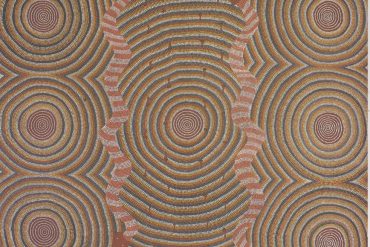In our previous post, Supporting Tutors through Peer Observation, we explored the concept of peer observation, its benefits for tutors, and key features of effective programs. Now, we’ll showcase four different peer observation programs developed across the University of Sydney, demonstrating how these principles are put into practice. By examining these models, which range from mentorship approaches to reciprocal peer learning, we aim to inspire and guide you in adapting peer observation for your own teaching context.
The many shapes and sizes of peer observation programs
Peer observation programs come in many shapes and sizes, reflecting the diverse needs and contexts of different units, schools, and faculties. At the University of Sydney, we aim to create a space where local context can influence approach while still adhering to best practices in peer observation. This flexibility allows for tailored programs that best serve the unique needs of each tutor cohort.
Below we present four peer observation programs developed across the University of Sydney. These programs demonstrate how different units/schools/faculties have implemented key features of effective peer observation while taking unique approaches to meet their specific needs.
The programs can be broadly categorised into two main models:
| Peer observation models | Key features | Example programs at Sydney |
| Mentorship Model: junior tutors observing senior tutors |
|
|
| Reciprocal Model: peer-to-peer learning | Mixed random pairing
|
|
Buddy system
|
|
Each model offers unique benefits:
- The Mentorship Model provides clear guidance for new tutors
- The Reciprocal Model promotes peer learning and community building
These diverse approaches demonstrate the flexibility of peer observation programs in meeting the specific needs of different faculties/schools and tutor cohorts.
Peer Observation programs at Sydney
1) School of Economics program
The School of Economics peer observation program follows a mentorship model, pairing junior tutors with experienced colleagues. This approach focuses on building confidence and skills in new tutors, with observations typically occurring in weeks 3 and 4 of the semester. The program’s success has inspired similar initiatives across the university, demonstrating its broad applicability.
Read more about the 2023 pilot program here: Empowering Economics tutors through peer observation
For more information on the School of Economics Peer Observation of Teaching program, contact Chandana Maitra.
| Key features | Participants | Timeline | Unique aspects | Observation proforma |
|---|---|---|---|---|
|
~10-15 tutors per semester | Semester-long:
|
|
Download the Economics observation proforma here |
2) Faculty of Science program
Integrated into the broader Casual Academic Training Program, the Faculty of Science’s peer observation initiative serves hundreds of tutors each semester. It features a structured timeline with observations between weeks 4-6 and emphasises practical implementation of observed techniques. The program’s large-scale approach and use of educational technology for idea sharing make it particularly noteworthy.
Science are in the process of piloting their program and will be sharing the results of this with Teaching@Sydney after their first iteration, so stay tuned.
For more information on the Science Casual Academic Training Program, including the peer observation component, contact Samantha Haley.
| Key features | Participants | Timeline | Unique aspects | Observation proforma |
|---|---|---|---|---|
|
Hundreds of tutors per semester | Semester-long:
|
|
Download the Science observation proforma here |
3) FASS1000 program (past program)
Although no longer active, the FASS1000 peer observation program provided valuable insights into intra-unit observation. This reciprocal model used mixed random pairing, allowing tutors to observe and be observed by different colleagues. The program’s focus on positive aspects of teaching offer interesting lessons for future initiatives.
Read more about the program here: Learning from the best: A case for intra-unit peer observation
For more information on the past FASS1000 Peer Observation Program, contact Alix Thoeming.
| Key features | Participants | Timeline | Unique aspects | Observation proforma |
|---|---|---|---|---|
|
13 out of 21 tutors (voluntary) | Two weeks (Weeks 10-11) |
|
Download the FASS1000 peer observation proforma here |
4) University of Sydney Business School program
The Business School’s Peer Partnerships program takes a collaborative approach to tutor development. Embedded within a comprehensive Tutor Development Program, it emphasises mutual support and reciprocal observations. The use of Canvas groups for partner matching and structured reflection activities throughout the semester make this program unique.
Read more about the program here: Peer Partnerships: a collaborative approach to tutor development in the Business School
For more information on the USBS Peer Partnerships program, contact Angie Knox and Christie Van Diggele.
| Key features | Participants | Timeline | Unique aspects | Observation proforma |
|---|---|---|---|---|
|
Hundreds of tutors per year | Semester-long, integrated with TDP workshops |
|
Download the USBS peer learning interview template here |
What next?
Ready to start planning your own peer observation program?
We’re here to help. Please reach out to Educational Innovation for guidance and support: [email protected]
Take it to the next level with Peer Review for Teaching
Once your tutors have gained experience with peer observation, they might be ready to take the next step: Peer Review for Teaching.
Learn more about the Peer Review for Teaching program at Sydney, including how you or your tutors can sign up for your own review: Receive personalised expert review and support for your teaching






1 Comment